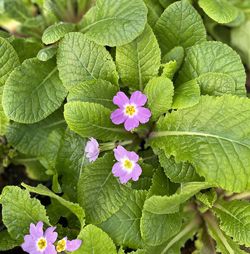Corylopsis
Winter Hazel
These deciduous natives of Japan and China offer winter charm with their open structure, delicate branching patterns and fragrant pale yellow bells that populate pendent clusters in early spring. Like rows of tiny lanterns, the flowers dress up bare limbs before handsome, rounded hazelnut-like leaves appear. Corylopsis are outstanding when grouped as a backdrop for perennials and grasses, planted in drifts at the edge of a wooded area, or placed under the partial shade of a pine or maple canopy. Provide a sheltered location, decent drainage, acid soil and moderate summer water.

This choice refined shrub will enhance a woodland garden with the scent and sight of soft yellow blooms on pendulous 3 in. racemes. The close-set bristle-toothed leaves, which cloak gently arching branches, are smaller than others in the genus. Long-lasting as a cut flower, Buttercup Winter Hazel is irresistible, especially when early blue-flowering Brunners are planted below.
Blooms March–April
Size: 5' 0" high x 8' 0" wide.
Hardy to zone 6.
Though Winter Hazel’s dangling chains of primrose-yellow flowers are always a much anticipated, late winter delicacy, this new splendid cultivar offers an additional radiant bonus. Butterscotch colors bathe the rounded deciduous foliage, which emerges with red and orange tints, matures quickly to canary-yellow and dons saffron and pumpkin shades for fall. All this lambent splendor embellishes layered, zig-zagging and gracefully arching branches. Championed by hummingbirds and bees, ‘Aurea’ can be situated in a shady open setting, where it sheds light on deep green shrubs and perennial shade aficionados such as Omphalodes, Corydalis or ferns.
Blooms March–April
Size: 6' 0" high x 6' 0" wide.
Hardy to zone 6.











